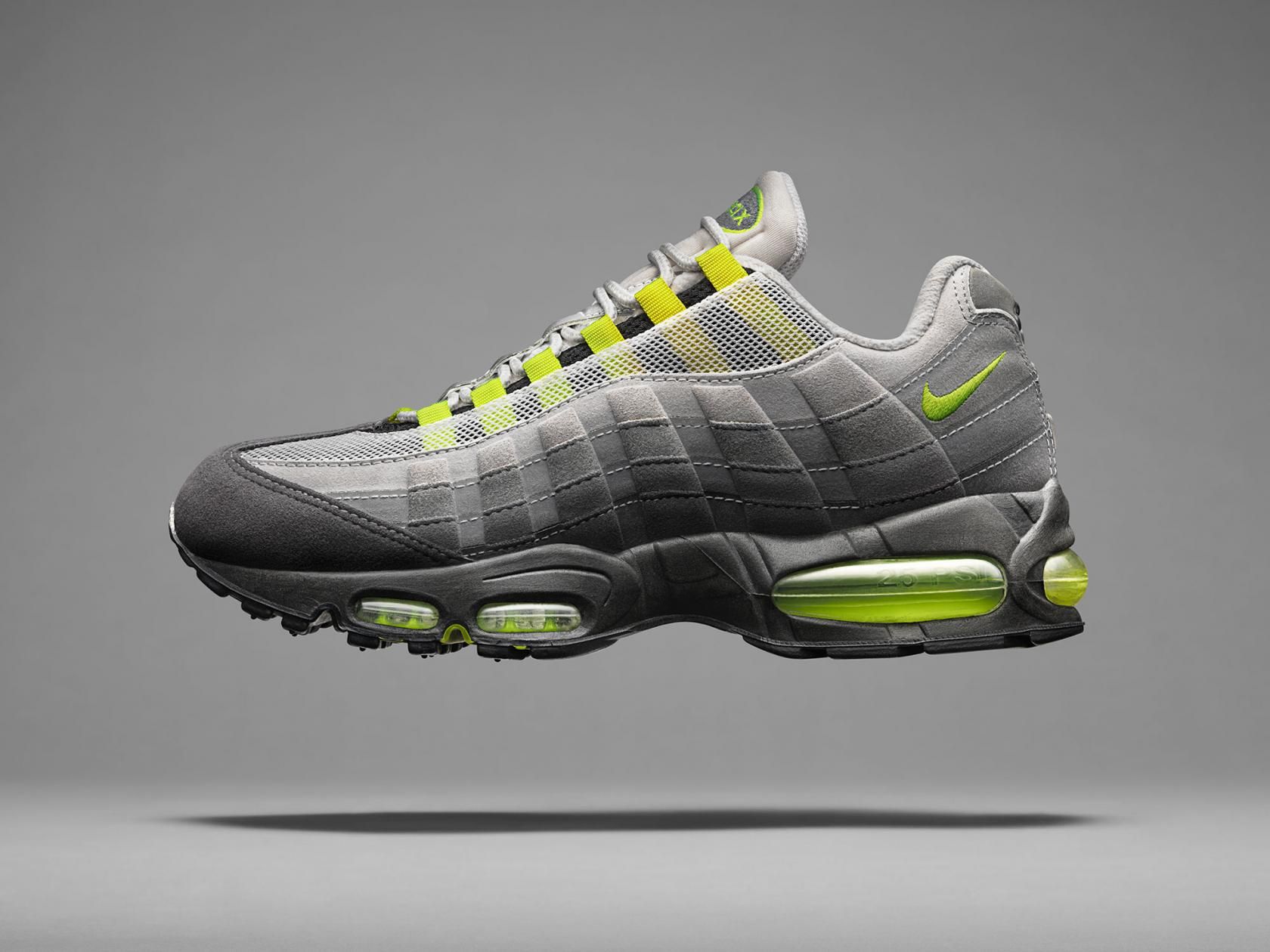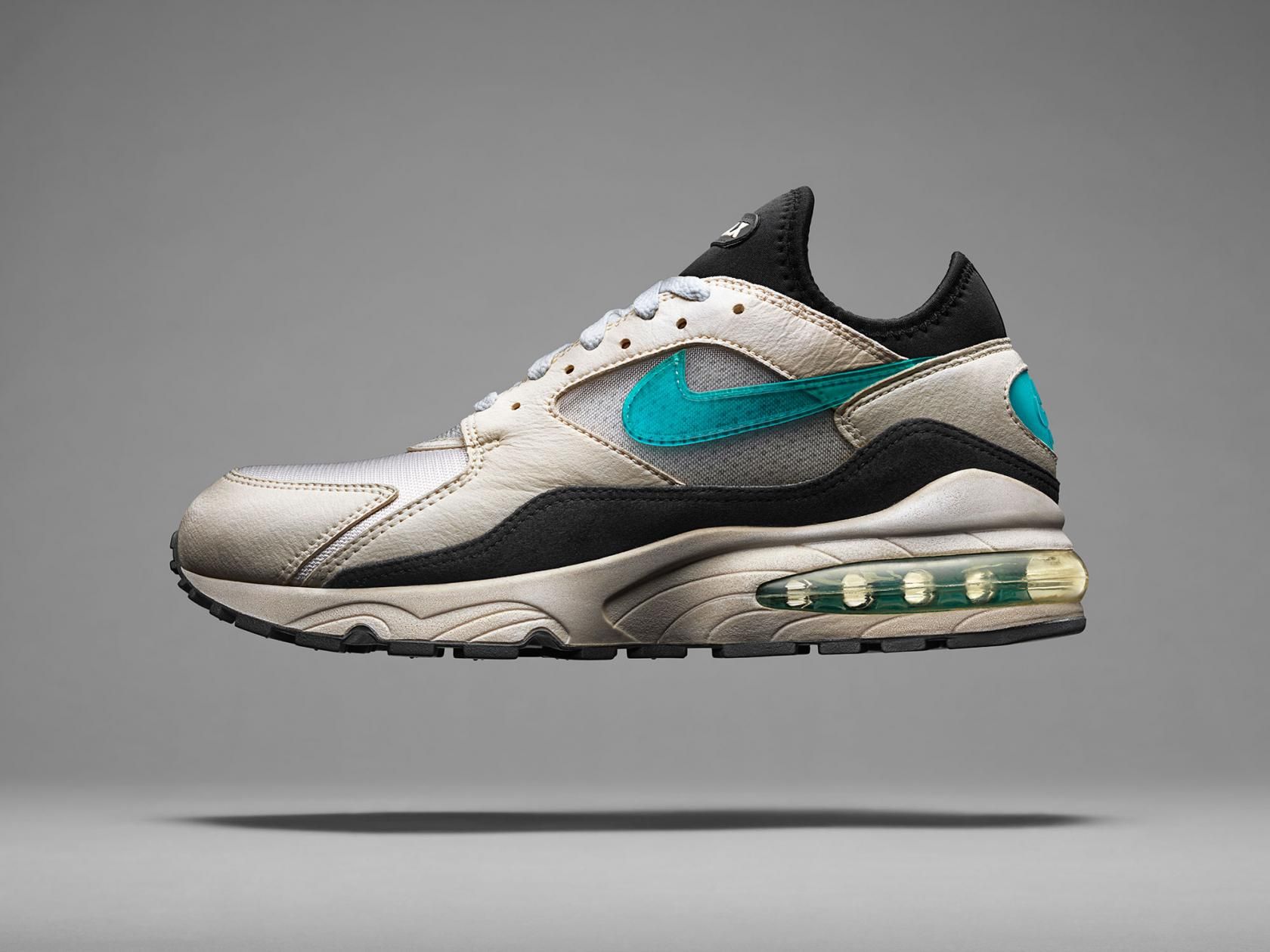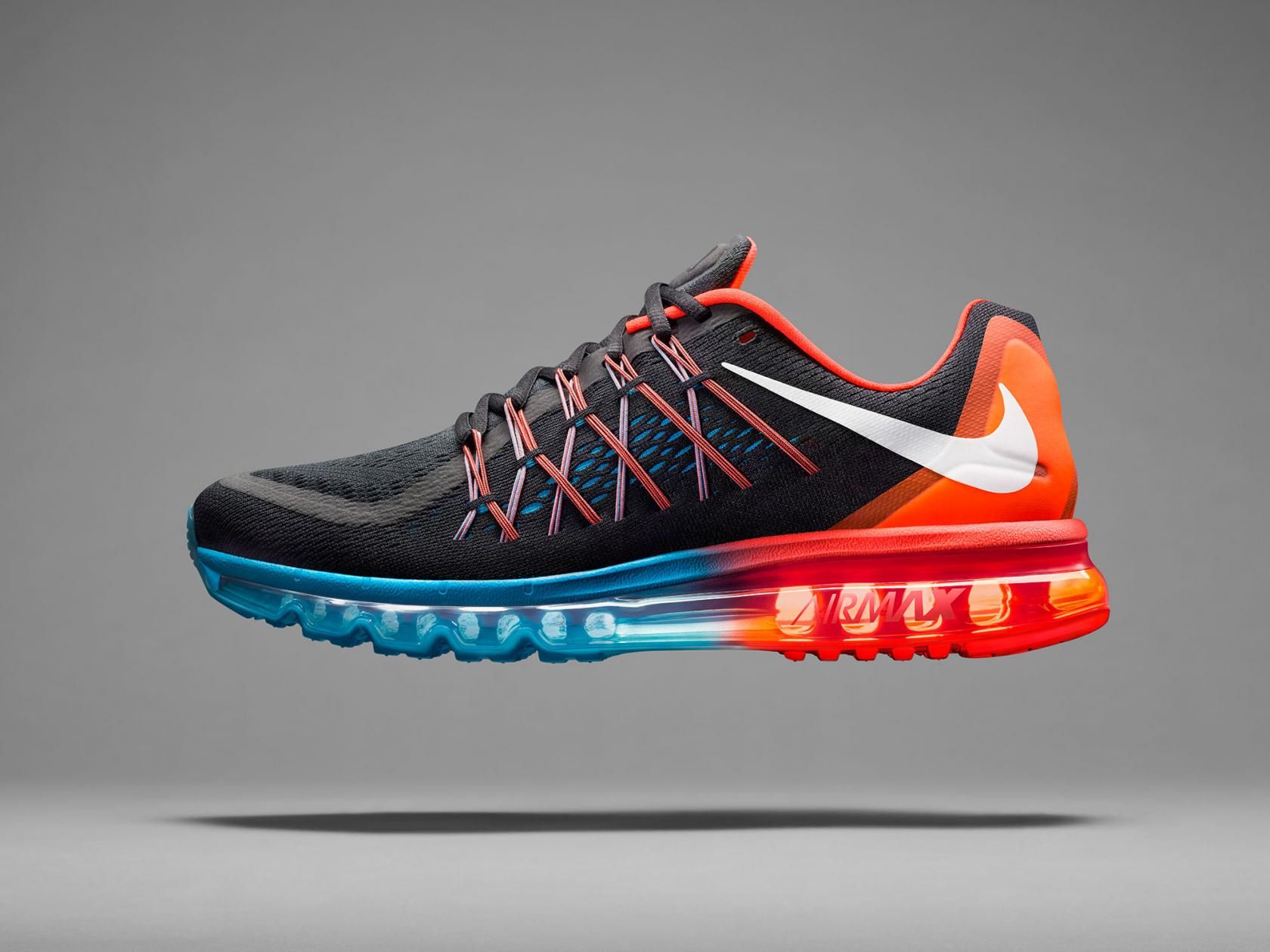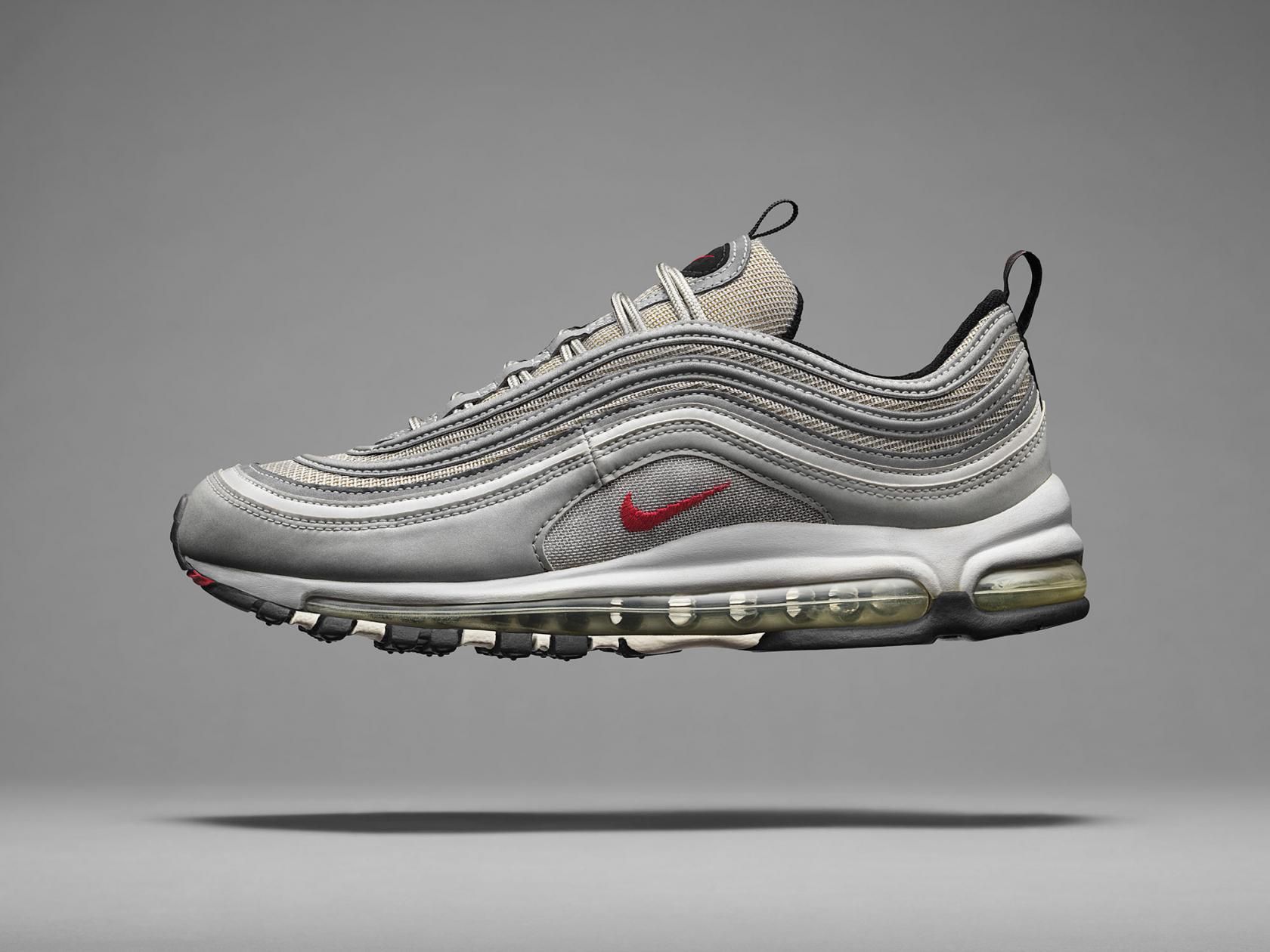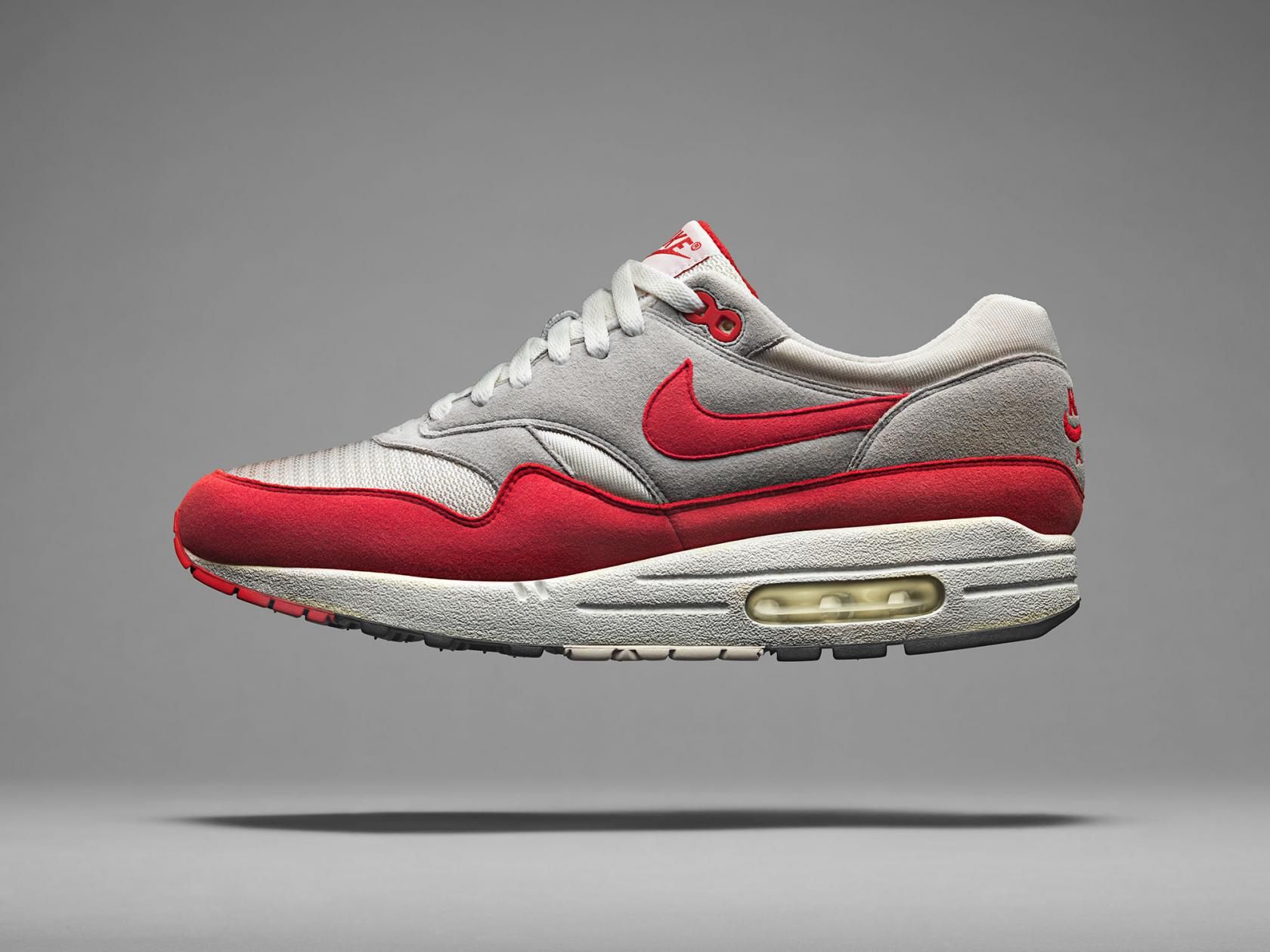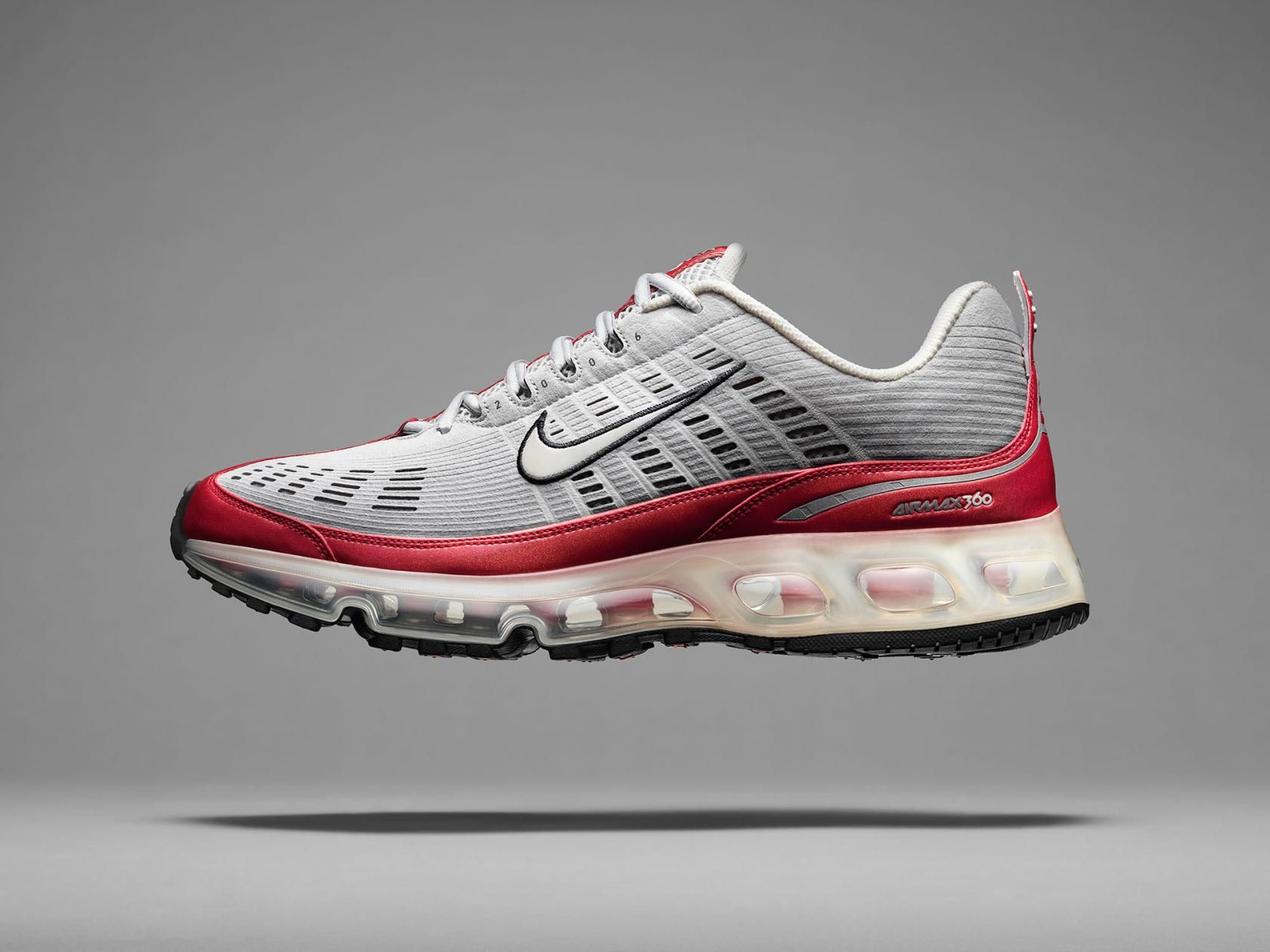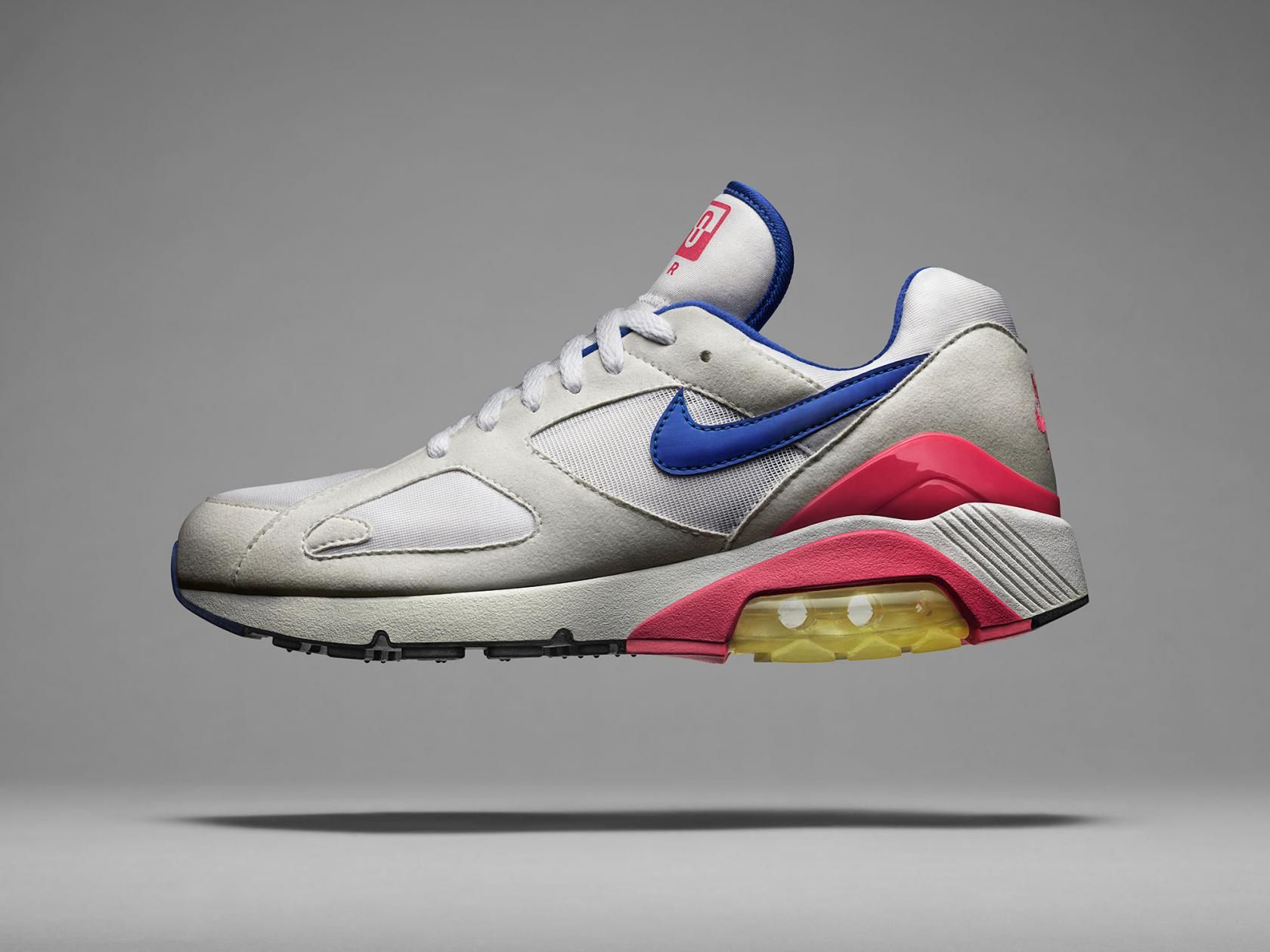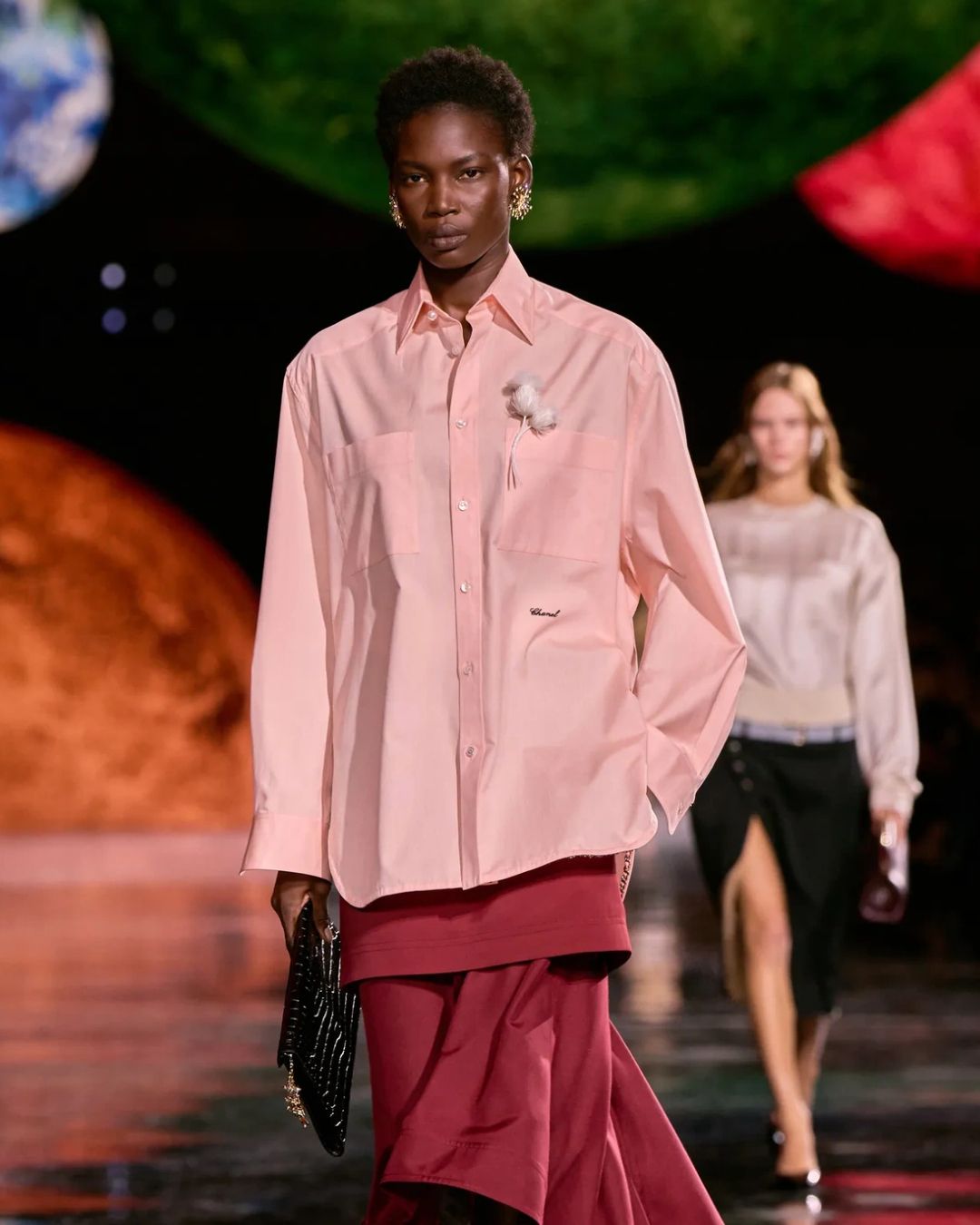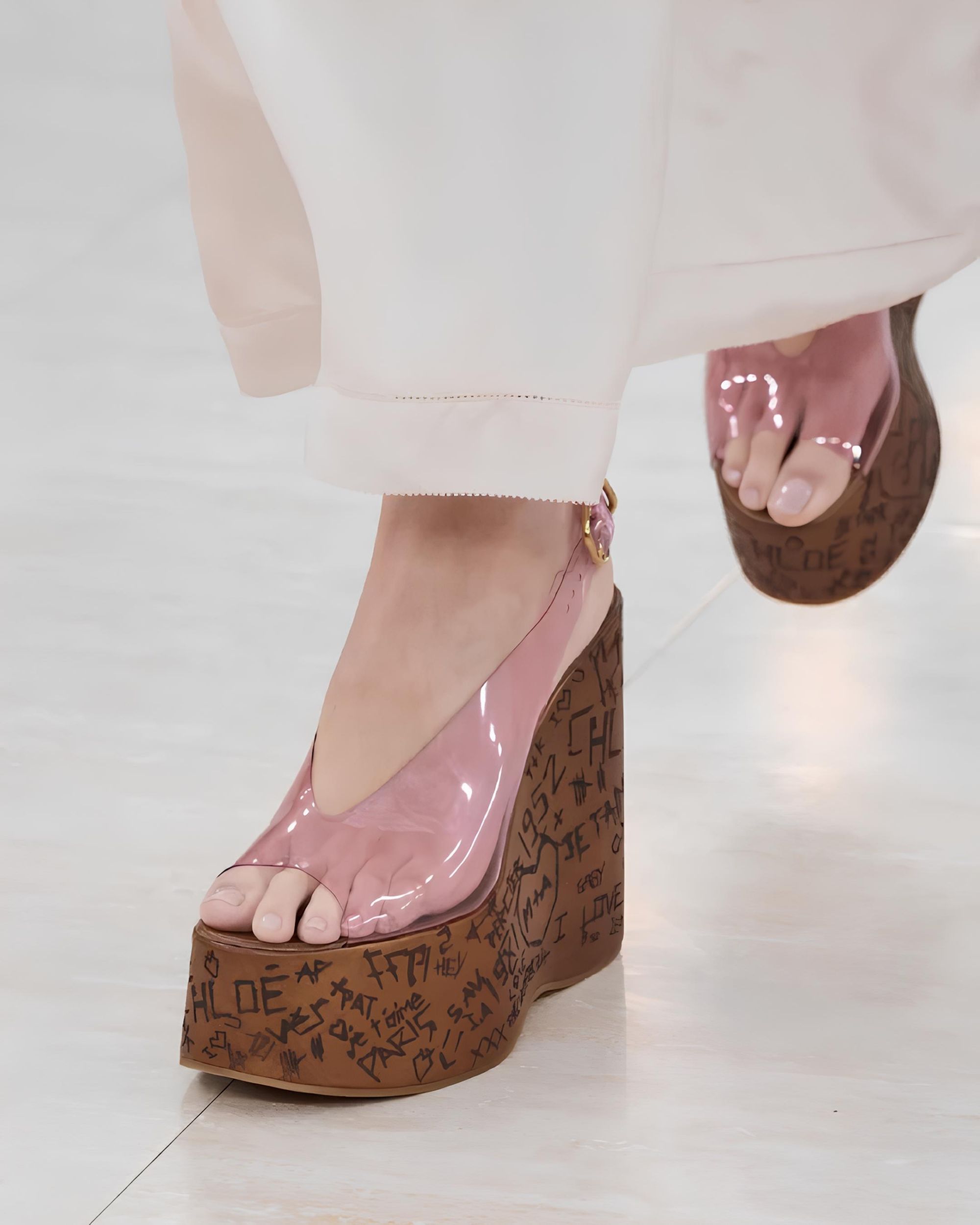MASTERS OF MAX: THE AIR MAX ICONS
Air Max 1
Innovation isn’t always visible. But when it is, its impact is immeasurable. In 1987, Nike introduced the Nike Air Max 1, the first shoe to put its innovation on full display. Created to cushion, Nike Air had suddenly become a window of opportunity for self-expression, style, and crucially, pure performance. The Nike Air Max 1 had arrived as a provocateur and a revolutionary. After this masterpiece appeared, nothing was the same again.
Tinker Hatfield was the lead designer who brought the Air Max to life. At the time, Nike Air was nothing new. Introduced in late 1978 on the Nike Air Tailwind, the Air-Sole unit was effectively hidden in foam.
However, Hatfield, a trained architect with a knack for changing the game, took maverick Parisian architecture as inspiration to cut away at the surrounding foam midsole to reveal a larger Air-Sole unit and prove its existence with audacious visibility.
“I specifically went to Paris to see the city, but also to visit the Pompidou Center,” Hatfield says. “It was a building turned inside out, with a glass skin underneath. Coming back to Oregon, I had meetings with the technicians who were working on these larger Air-sole units and relayed my thoughts. Maybe we could also take that technology and expose it and create a shoe that's like no other.”
At the time, it was considered by many to be an outlandish idea. But Tinker and the team pushed forward. To further stand out from the era’s running shoes and drive home the message of visibility, the rand featured an attention-seeking bold color.
The Air Max family has evolved over the past 28 years, with hundreds and hundreds of memorable makeups. But each model owes its existence in part to the transcendent Nike Air Max 1.
Air Max 90
The Nike Air Max 90 has presence. Even when standing still, the shoe looks like a masterpiece in motion.
Arriving in 1990, the third in the Air Max family featured more Nike Air, volume wise, than its predecessors. However, its fluid aesthetic was its defining feature. Designer Tinker Hatfield knew the silhouette would hit the ground running, so the design was rooted in that mentality. The angle of the panels and the color block was the starting block for those looking for inspiration to channel pure performance.
The Air Max 90 also included ribbed plastic panels and multiple lacing options to create the perfect fit. Color was another key ingredient. The shoe’s radiant shade of red, which later became known as infrared, highlighted the visible air. That hard-to-miss shade is as synonymous with the Air Max 90 as its shape.
Popular from the start, the Air Max 90 ensured that there would be no sequel syndrome for the Air Max franchise. It symbolized a new decade with its shape, look and colors. It would be updated and remixed in the years that followed. But it stays forever coveted and always essential.
Air Max 180
The Nike Air Max 180 was born from the collective minds of Tinker Hatfield and Air Force 1 designer Bruce Kilgore. The two legends set out to make the Max Air unit visible on both the outsole and midsole, which highlighted the shoe’s 180-degrees of cushioning. In addition to its entirely new aesthetic, the Max Air unit was 50 percent larger than previous designs.
The upper featured a new stretch dynamic inner sleeve that stretched to match the shape of the foot, while the molded heel counter provided support. The V-flex forefoot grooves were another early experiment in natural motion.
The shoe’s visible air was visible across the world. Just as the Air Max 1 was led by a memorable commercial, the Air Max 180's creative looks were supported by advertisements created with legendary cartoonists, special effects masters and movie directors.
Air Max 93
For the Air Max 93, visibility was the driving force. How do you shock an audience you’ve already surprised time and time again? The heel unit had always been the focal point, so why not take it to its limit? Tinker Hatfield’s latest creation was built on the Air Max 90’s flex grooves and used a dynamic fit neoprene inner sleeve to give the foot and ankle added support.
Then there was the not-so-small matter of the 270-degrees of visible air. The precision-engineered blow-molded Air-Sole unit — inspired by plastic milk jugs — created completely new standards of cushioning and would become the cornerstone for visible air in the forefoot.
Air Max 95
The Nike Air Max 95 was not just a shoe. It was an outcast.
Debuting in 1995, the bold silhouette was the first to feature visible Nike Air in the forefoot. This completely new approach to cushioning offered dual air units for superior comfort and support for the runner. Literally the black sheep of the family, The Air Max 95 was the first Air Max model to feature a black midsole, a trait that was a drastic departure from traditional running shoe design.
This explosion of air was the defining characteristic of a silhouette inspired by the human body. The midsole was based on the spine, literally acting as the backbone of the design. Nylon eyelets represented the human body’s ribs, while the layered panels and mesh symbolized muscle fibers and flesh.
The graduated approach to the upper, starting with a darker base, was meant to help the shoe remain clean even when used for off-road runs. Barely-there branding and a new Air Max typeface were also key characteristics of this model. And as with the Nike Air Max 1 and Nike Air Max 90, a statement color would highlight the Nike Air-Sole—this time from within.
The Air Max 95 opened the front window in design and sparked a global movement. From New York City to London to Tokyo, a generation wanted to wear the future on its feet. Multiple iterations later, it’s still turning heads.
Air Max 97
As if it were challenged by the Air Max 95’s forefoot visibility, the Nike Air Max 97 answered by providing the first full-length Max Air unit. Naturally, something this groundbreaking needed an upper to match the audacious innovation. Starting with silver, the fluid design took inspiration from Tokyo’s lightning-fast bullet trains, while reflective piping gave the Air Max 97 a look that amplified in the right light. The perfect shoe for a period of anti-subtlety, where more mattered in music, movies and style, has since become a design classic that defines its time.
Air Max 2003
A minimized upper combined with a maximized approach to cushioning defines the Air Max 2003. The new silhouette borrowed the same Air-Sole unit used in the Air Max 97. But new developments in molding, construction and cushioning brought the foot closer to the ground for extra flexibility. Taking a path less traveled, the Air Max 2003 traded the bold color of past Nike Air Max models for a tonal option that gave the shoe a new aesthetic for the aughts.
The upper used a Teijin performance material similar to what was employed in elite track spikes and football boots. This gave the shoe a lightweight, aggressive look and a premium feel, making it incredibly comfortable straight out of the box.
Air Max 360
Almost 20 years after the original Air Max debuted, the mission to make wearers walk on air was realized in the Air Max 360. A completely new kind of Max Air unit was engineered, offering improved air-cushioned stability. Gone were the substantial layers of foam separating the foot from the air. For the first time, thermo-molded construction was used to achieve 360-degrees of cushioning.
A tribute to the original Air Max palette highlighted the latest breakthrough, while the laser-cut gradated effect on the upper resurrected the Air Max 95's look. A onetime-only Tier Zero pack even applied some iconic Air Max uppers to this new sole. Far from the end of a crusade, the lightest Air Max to date created the blueprint for a new wave of visible air.
Air Max 2015
The Air Max 2015 is as much about reinvention as it is about revolution. The performance running shoe has an upper that matches the dynamic motion of the flexible, ultra comfortable Max Air cushioning that debuted in 2013. The first Air Max with a breathable, lightweight, fully-engineered and almost seamless mesh upper works in tandem with Flywire technology to wrap the foot. By employing a plush, bouncy ride that uses tubular construction and flex grooves for the latest standard of maximum, the transition, takeoff and landing are improved. Even the reverse Swoosh subverts familiarity and signs off on a new generation of expression.










































